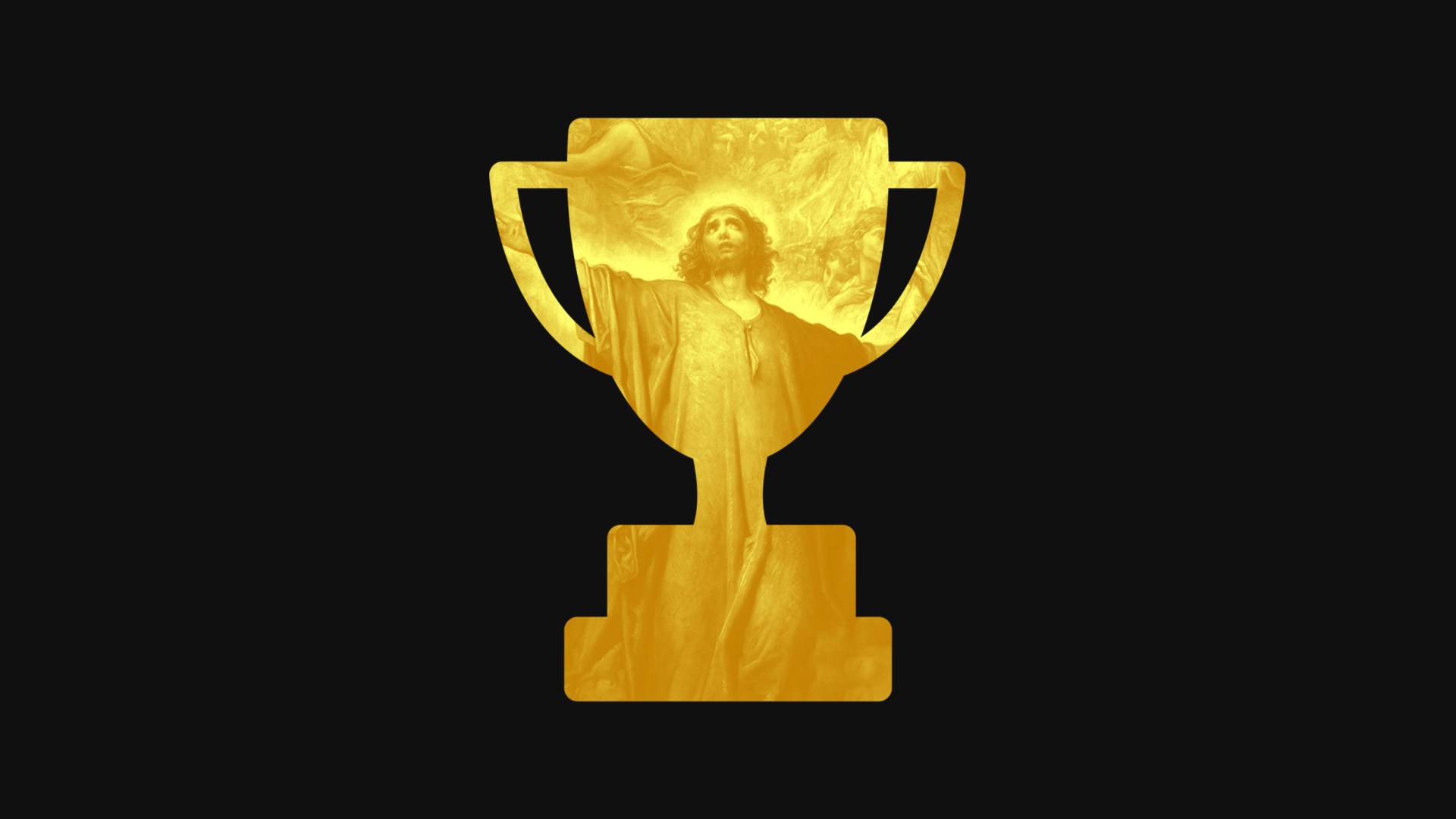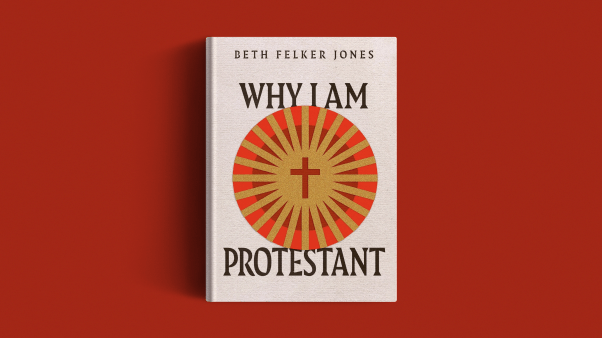In the Gospel of Mark, we read of a time when Jesus and his disciples were traveling through Galilee on their way to Capernaum.
Jesus had recently brought three of his disciples with him on a mountain to witness his transfiguration. Afterward, he went about teaching, healing, and performing miracles.
He also listened. When Jesus and his followers arrived at their destination, he asked them, “What were you arguing about on the road?” (9:33).
In the next verse, Mark records that “they kept quiet because on the way they had argued about who was the greatest.” Jesus responded by teaching about life in the kingdom, giving them a different conception of greatness: “Anyone who wants to be first must be the very last, and the servant of all” (v. 35).
Compare that scene with American life today, where people enjoy arguing about the GOAT (greatest of all time) in various endeavors. Among sports fans like me, this is an especially popular activity. What should Christians think about this contrast—between Jesus shutting down and reframing a conversation about greatness and our culture indulging in it as a pastime?
Zev Eleff didn’t write his new book, The Greatest of All Time: A History of an American Obsession, with that particular question in mind. Yet it does provide a helpful starting point to consider why we talk so much about “the greatest” and what we mean when we do.
A historian who specializes in American religion and Jewish studies, Eleff also serves as the president of Gratz College in Pennsylvania. His academic background is apparent in his book, which engages with scholarship on fame, celebrity, and popular culture. At the same time, his writing has a compelling narrative flow. You don’t need to be a scholar to follow along.
Why a book on greatness? To Eleff, conversations about greatness provide a forum for people to “discuss their ‘ideal’ values and make meaning of their personal lives.” By exploring shifting ideas about “the greatest,” Eleff believes, we can see and understand changes in American life and culture.
To make his case, Eleff moves chronologically through modern American history, from the dawn of the 20th century to the present, analyzing selected people and events (plus one cartoon mouse) to consider rival approaches to defining and conceiving of greatness.
He makes an important point early on when he contrasts “greatness” with “fame.” In his telling, the obsession with greatness emerged in response to modern mass media and the rise of celebrity culture. These changes turned far more people into public figures than ever before, leading to a “fame inflation” that devalued the significance of being widely known.
In this environment, people needed a category to identify the most important and influential figures within the ranks of the famous. “Greatness” did the trick.
While Eleff could have done more to engage earlier conceptions of greatness—this was hardly a new concept, after all—he is right to note that modern consumer culture changed the ways people defined being great.
Several other key points stand out in Eleff’s wide-ranging analysis. In his chapter on the “Hall of Fame for Great Americans,” established at New York University in 1900, he highlights the difficulty of building consensus around a shared definition of greatness.
Another chapter, on the trio of Thomas Edison, Henry Ford, and Albert Einstein, looks at a common tendency in American culture: taking someone who has achieved success in one area of life and then trusting that person for expertise or guidance in all areas of life. Eleff quotes G. K. Chesterton’s complaint, made in 1930, that in America, “men and women who have achieved eminence in one field feel themselves fully qualified to be leaders in other unrelated ones.”
In his chapter on the rise and fall (and rise) of Charlie Chaplin, Charles Lindbergh, and Mickey Mouse, Eleff traces the fickleness of greatness, revealing how quickly the public can turn against its heroes. Modern greatness, he shows, rests atop the shifting sands of public opinion.
There’s also a unique pairing of Babe Ruth with Franklin and Eleanor Roosevelt as figures of nostalgic greatness in the 1950s, and then a chapter on countercultural greatness in the 1960s, featuring Muhammad Ali and The Beatles.
Taken as a whole, The Greatest of All Time offers an engaging historical narrative with fascinating vignettes and details. For readers broadly knowledgeable about the contours of American history, this is a fun book to read.
But while Eleff’s analysis has plenty of insight, it sometimes oversimplifies to a frustrating degree. To give one example: Eleff argues that, apart from the 1950s, American conceptions of greatness linked to the idea of change. Being a great American, by this standard, meant being a change maker.
Fair enough. American culture and folklore often tap into a powerful mythology of progress that tends to value change. But Americans also express a countervailing desire for stability amid change, for heroes who represent some ideal notion of the past.
Eleff’s own examples point to this. In his chapter on the Hall of Fame for Great Americans, he briefly discusses the debate over whether to include Confederate general Robert E. Lee. Many Northerners on the voting committee opposed his candidacy, arguing Lee should not be considered a great American. He was a traitor to the country who led a treasonous rebellion.
But white Southerners propped him up as a great man—not because he changed the world for the better but because he symbolized the old order of the region’s slaveholding past. To them, Lee represented honor and dignity, a commitment to their version of traditional values. Ultimately, the Southern perspective won out. Lee received enough votes to put him in the Hall of Fame.
When Eleff argues that American greatness was always associated with change making, he’s zeroing in on one version of greatness, the one most closely associated with the general-interest magazines and newspapers where he finds much of his source material. He would have strengthened his arguments by giving more nuanced attention to the alternative ways that Americans—shaped by region, race, ethnicity, religion, and more—thought about and envisioned greatness.
Eleff closes his book with reflections on the state of “greatness” discourse today. He cites basketball star Michael Jordan as “the last greatest of all time,” lamenting that the concept, like fame in the early 20th century, has lost its value. He argues that we’re witnessing a “run on ‘greatness,’” the byproduct of a fragmented, polarized culture with a glut of people claiming to be the greatest in this or that pursuit.
Eleff has a point that we throw around the GOAT label far too easily. Yet I do not think the concept has lost its value. In fact, I think the popularity of “greatness” conversations is one reason Christians should be invested and involved in lending them added depth.
There are three contributions I think we’re well positioned to make.
First, if we return to the way Jesus talked about greatness, we can reject any ambition to strive for higher status over another person. When Jesus’ disciples debated who was the greatest among them, they were arguing over who would claim the positions of greatest prominence and status in his kingdom.
His rebuke and redefinition should ring in our ears today. If greatness is about “lording over others,” if it involves assigning greater worth or value to one person over another by comparing accomplishments, then we’ve embraced a worldly perspective. And this is true even if we’re calling our pursuit of higher status “servant leadership.”
Second, we can draw from the classical virtue of magnanimity, or “greatness of soul,” which Christians have adapted and revised over the centuries.
Philosopher Sabrina Little has written helpfully about this virtue. Understood in a Christian framework, magnanimity provides an aspirational vision that calls us to step out in courage, to face challenges, and to grow into our gifts and talents while honoring God and other people. As Little writes, “We can strive for greatness in ways that do not devalue others.”
Finally, while recognizing that greatness should encompass our character as well as our craft, we can continue celebrating great human achievements, particularly in creative cultural activities like music, sports, movies, architecture, literature, and more.
This is especially important in our age of AI generation. Rightly understood, celebrating human creativity is an opportunity for celebrating the God who created us. It invites us to consider our embodiment and to reflect on what it means to be made in God’s image.
It also encourages us to remember our dependence on one another. To say that basketball great Stephen Curry is “the greatest shooter of all time” is to place him in conversation with a community that stretches across time. It means recognizing that Curry’s greatness depends on the players who came before him and that he, in turn, will shape those who come after, including whoever emerges as the next “greatest.”
In this way, conversations about greatness provide opportunities for considering not only our possibilities but also our limitations as time-bound creatures.
Eleff’s book is very much aware of these limits. As we’ve seen, he emphasizes how conceptions of greatness are malleable, shaped by the social and cultural conditions of particular eras.
At the same time, we should remember that people themselves shape the cultural and social conditions around them. We are not resigned to passively accept or reflexively reject the versions of greatness present today; we can articulate and promote a constructive vision of our own.
While The Greatest of All Time is not designed to offer that vision, it does provide an intriguing narrative that can help us think more deeply about the conceptions of greatness our culture embraces—and the better versions we might promote in our own communities.
Paul Putz is director of the Faith & Sports Institute at Baylor University’s Truett Seminary and author of The Spirit of the Game: American Christianity and Big-Time Sports.


















